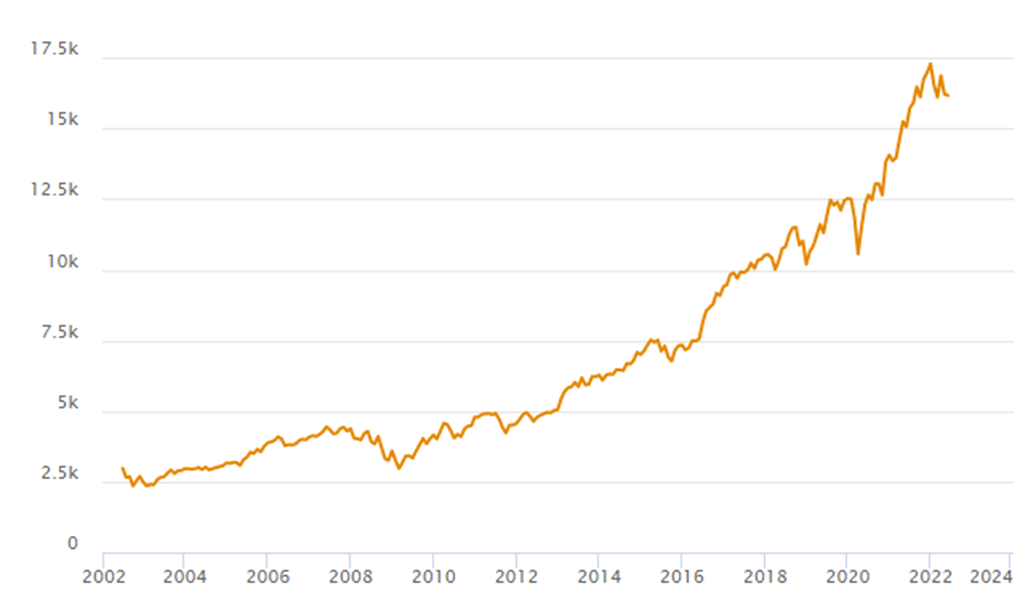Research by Legal & General (L&G) makes for sobering reading if you are aged between 40 and 60.
It reveals that soaring inflation could have a double impact on those in this age group, as they are most likely to be supporting adult children or elderly relatives financially. This might be because they’re helping an elderly parent cope with soaring energy bills, or children who are struggling with the rising cost of living as they study at university.
If you’re helping to support family members, this double inflation hit might be significantly reducing your wealth in real terms. Read on to discover why this is, and four clever steps you could take to help inflation-proof your wealth.
Inflation is the rising cost of goods and services
As inflation is the increasing price of goods and services, it could affect everything from your utility bills to your weekly food shop. Over time, inflation devalues your money in real terms, as £1 in the future is likely to buy you less than it does today.
If you use an inflation calculator, you can see that you needed £193 in June 2022 to have the same spending power as £100 in June 2002. This means your money needed to grow by 93% during the period to keep pace with an average inflation rate of 3.4% a year.
This is significantly below the inflation rate for May 2022, which the Office for National Statistics (ONS) revealed was 9.1%.
If you are helping loved ones financially, your money might be affected by rising inflation twice: once as you pay your own bills and again as you pay the bills of the other person.
While this might mean that your wealth could be suffering a greater drop in real term value, there is good news as you might be able to counter the effects of inflation on your wealth. Let’s now look at four ways you could do this.
1. Calculate your personal inflation rate
The official UK inflation rate is an average calculated by the Office for National Statistics (ONS) using a basket of 730 goods and services, which provides around 180,000 prices. In 2022, the basket includes fuel, meat-free sausages, sports bras, and anti-bacterial wipes.
As the ONS uses this basket to calculate the average rate of inflation, your personal rate might be different. This is because your spending is unlikely to exactly match the official figures, and the items you spend your money on could increase or decrease in price more quickly (or slowly) than the average.
So, for example, if you drive more miles than the average person – perhaps because you’re caring for an elderly relative – your personal inflation rate is likely to be higher as you use more fuel. If you understand what you are spending your money on, and what your personal inflation rate is, you could adjust your spending to mitigate the rising cost of living on your finances.
To calculate your household’s inflation rate, add up your current regular monthly outgoings and compare it to previous years. This means that if you spent £3,600 in May 2022 and £3,000 in May 2021, your personal inflation rate was 20% in the year between.
2. Invest your money
Over the long term, the stock market typically offers greater growth potential than cash savings, which may help shield your money from skyrocketing inflation.
To demonstrate this, you might want to consider the following illustration, which shows the performance of the MSCI World Index between June 2002 and June 2022.
The index tracks the performance of a group of companies in 23 developed nations.

Source: MSCI
As you can see from the axis on the left-hand side, while there have been downturns along the way, the index has increased significantly during the 20-year period, even with economic uncertainty, Brexit, and Covid.
That said, please remember that the value of your investment can go down as well as up, and past performance is not a reliable indicator of future performance.
3. Rebalance your investments
If you already have investments, they will typically comprise of different assets such as stocks and shares, government bonds, cash and, potentially, property. Over time, these assets increase or decrease in value, which could reduce their growth potential or expose them to unnecessarily high levels of risk.
Rebalancing investments can realign them to where they were originally, which could improve growth potential and help to inflation-proof your wealth.
4. Ensure your investments are the right level of risk
As potential growth is usually provided by the higher-risk funds within an investment, such as stocks and shares, not having enough exposure to these could reduce your investment’s future value. Put simply, while too much risk can jeopardise your wealth, so can not taking enough.
A financial planner could confirm the level of risk your investments currently have, and whether it’s right for you. If it’s not, they could provide alternatives that may expose your money to greater potential growth, which could inflation-proof your cash while retaining a level of risk you’re comfortable with.
Get in touch
If you would like to discuss ways to inflation-proof your wealth, please email us on admin@stonegatewealth.co.uk or call 01785 876222.
Please note
This article is for information only. Please do not take action that is based on anything you read in this article until you have sought professional advice.
The value of your investments (and any income from them) can go down as well as up and you may not get back the full amount you invested. Past performance is not a reliable indicator of future performance. Investments should be considered over the longer term and should fit in with your overall attitude to risk and financial circumstances.


 Production
Production